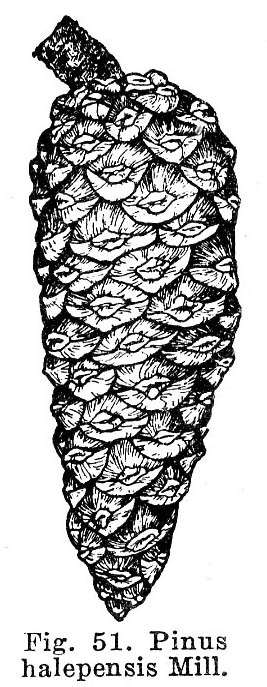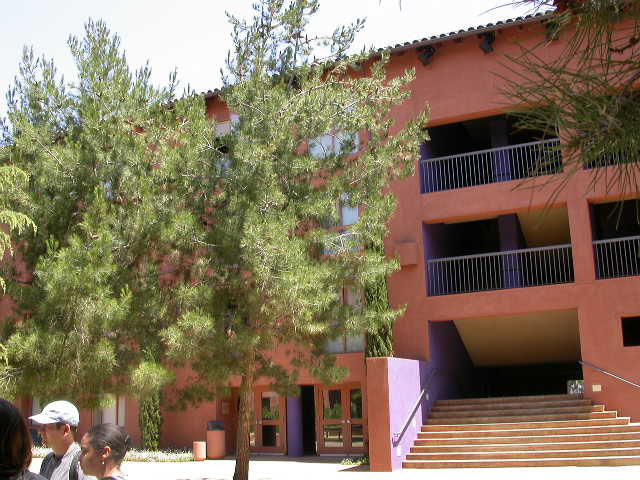Pinus halepensis
 Aleppo pine
Aleppo pine
A two-needled pine with short, thin needles and small cones, each about 3 inches long. Bunches of three needles are not uncommon. Fine trees can be seen between Roble Field and the parking lot off Panama Street, and another north of Landau Economics. There is an older grove of leaning specimens on Mayfield Avenue east of Florence Moore Hall around Levin Field; at a certain height, several of the trees take a bend, which is interesting to try to explain. The same tendency toward the vertical can be seen in some of the 20 stone pines in Stone Pine Plaza; in this case, the lower parts of the trunks are not parallel, the random departures from vertical being presumably due to circumstances at the time of planting. In Palo Alto, see two grand giants, one at 833 La Para Avenue and another at 1231 Parkinson Avenue. From a distance. Aleppo pine can readily be mistaken for its close relative Calabrian pine.

The Aleppo Pine has ancient associations with human culture; it was the source of a resin used in Egypt for embalming and is referred to in the Bible under the name fir (in correct accordance with the traditional meaning of that word). It is a common pine in southern Italy, where its ability to withstand drought is in its favor. It was a major timber producer in Cyprus but has now been replaced by exotics.
As for other pines, the young closed seed cones are different in appearance from the open mature cones.
Name derivation: Pinus – Latin for pine; halepensis – of Aleppo (Syria).
About this Entry: The main text of this entry is from the book Trees of Stanford and Environs, by Ronald Bracewell, published 2005. John Rawlings subsequently added the note on young seed cones.




